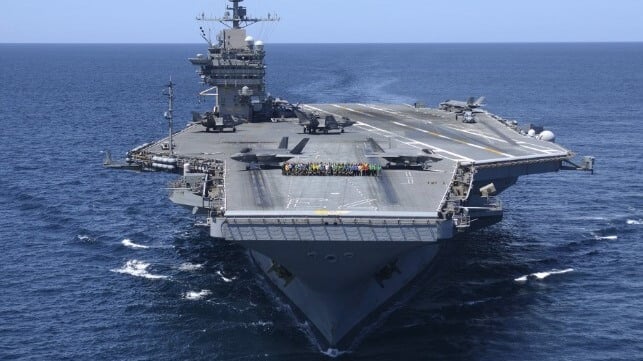Report: US Navy May be Overstating Crew Qualification Data

The U.S. Navy has a growing problem with manning, and is on track to miss recruitment targets for the second year running. At the deckplate level, the challenge may be slightly greater than it looks, according to the Government Accountability Office. For counting purposes, the service has been treating some personnel as fully qualified to "fit" a position aboard ship when they do not have the corresponding experience level. The effect varies by ship class and department, but overall, GAO believes that the Navy's accounting methods make fit levels appear higher than they actually are.
Two rules are skewing the Navy's internal metrics, according to GAO. The first rule (Quality of Alignment 6) is used to substitute one enlisted pay grade for a higher pay grade. With this rule, the Navy's statisticians can count a journeyman as fitting the role of a supervisor - not just filling it.
The second (the Nuclear Rule) is similar, and allows enlisted junior sailors to count as "fitting" the positions of more senior sailors. The rule only applies to the nuclear Navy enlisted ratings on submarines and aircraft carriers.
When GAO tried taking out the first rule and re-counting, the Navy's "fit" metric dropped by about six percent fleetwide, and by more than 20 percent aboard the Virginia-class and Los Angeles-class attack subs.
The nuclear rule appears to give reactor engineering departments a higher "fit" percentage than they would otherwise have. As an example, the carrier USS Carl Vinson's official numbers show the nuclear department has a fully staffed roster of 25 mechanical supervisors. Removing the rule and recounting, GAO found only 10 qualified supervisors, along with 12 lower-ranking journeymen and three "excess personnel from other pay bands."
The measurement shortcomings are understood by officials at Navy Personnel Command Career Management Department and Fleet Forces Command, according to GAO. These leaders say the rules are designed to show at a glance whether or not an enlisted crewmember has the right specialty (rating) to fit the job, even if not the right experience level.
These officials have also asked Navy statisticians to keep a separate, internal set of "fit" numbers for nuclear vessel crews, without the counting rules applied. The unaltered numbers are used "to have visibility over personnel safety and operational risk factors."
The outcome is about more than measurement. "Fill and fit" both played a role in the deadly collision involving the USS Fitzgerald in 2017, with undertraining and undermanning both cited as contributing factors. More recently, the low morale and string of suicides aboard USS George Washington has been blamed partly on a shortage of qualified leaders.
The lack of supervisor-level enlisted personnel is felt keenly at the deckplate level. "Sailors we met with at the Apprentice and Journeyman pay bands told us they are sometimes tasked to fill Supervisor gaps and work in unsafe environments," GAO found. One interviewee in a study group told the agency's investigators that "we not have enough petty officers and chief petty officers to help teach junior sailors and ensure a safe working environment.”
GAO's final assessment was unsparing. "Until it removes the rules that allow for a junior sailor to count as filling the position of a more senior sailor from its fill and fit metrics, the Navy will not be able to ensure that data actually represent what they purport to represent," the agency concluded, adding that the Navy may be providing less than fully accurate data to Congress.
